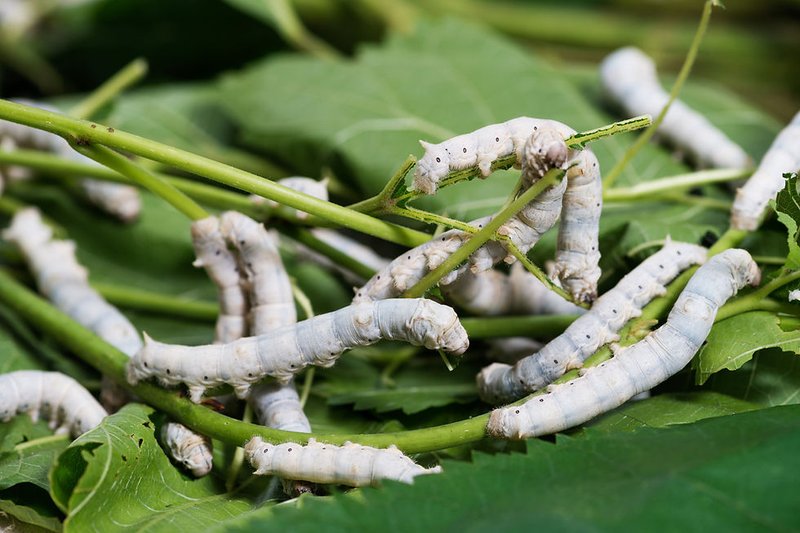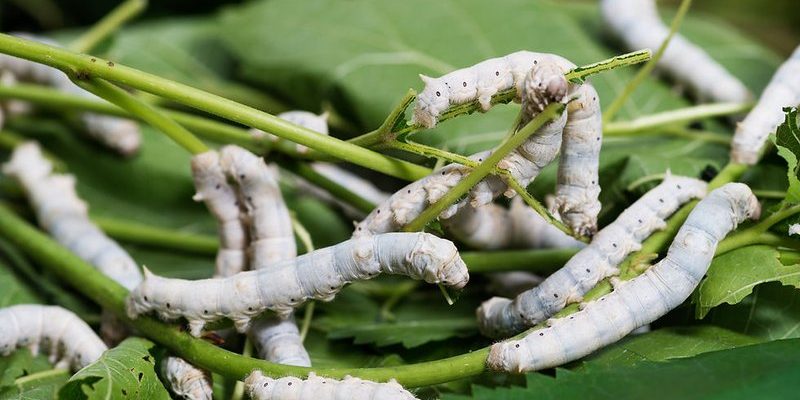
Silkworm farming has roots that stretch back thousands of years to ancient China, where it was often considered a closely guarded secret. Over time, this practice spread across the globe, making its way into various cultures. But here’s the thing: despite technological advancements and the rise of synthetic fibers, silkworm farming remains relevant. You might be wondering why, and it’s all about sustainability, economic benefits, and the unique qualities of silk that synthetic alternatives just can’t replicate.
Sustainability in Sericulture
When we talk about sustainability, silkworm farming hits the mark in several ways. First, the process of raising silkworms requires less land and water than many traditional crops. They thrive on mulberry leaves, which can be grown in various environments, even in small spaces. This adaptability makes silkworm farming accessible to many farmers, especially in rural areas.
Moreover, the production of silk involves minimal chemical use compared to synthetic textile manufacturing. In an age where we’re all becoming more eco-conscious, this natural approach resonates with consumers who value environmentally friendly practices. Here’s a fun fact: the waste from silkworms can be used as fertilizer, promoting a circular economy in agriculture.
The Role of Local Economies
Silkworm farming also plays a significant role in supporting local economies. Many farmers depend on sericulture as a primary source of income. By cultivating silk, they can tap into a market that values high-quality, handmade products. This not only helps them financially but also preserves traditional farming techniques passed down through generations.
Plus, consider the global silk market. It’s worth billions of dollars! As demand for silk climbs, especially in fashion and home goods, it creates opportunities for these farmers to thrive. It’s a win-win situation where local communities benefit while providing something that’s in high demand worldwide.
The Unique Qualities of Silk
Now, let’s talk about what makes silk so special. Silk is known for its *luxurious feel*, durability, and luster. Unlike synthetic fibers, silk is biodegradable and hypoallergenic, making it a fantastic choice for those with sensitive skin. You won’t find the same comfort and style in polyester, no matter how hard you try!
Here’s the thing: silk has natural temperature-regulating properties. It keeps you warm in the winter and cool in the summer. So when you invest in a silk product, you’re not just buying fabric; you’re embracing quality and longevity. Who doesn’t love a fabric that treats you well throughout the seasons?
The Fashion Industry’s Love Affair with Silk
The fashion industry is another reason why silkworm farming remains relevant. Designers and brands frequently spotlight silk in their collections, emphasizing its softness, sheen, and drape. High-end fashion houses still consider silk a staple, often depicting it in their runway shows and advertisements.
Furthermore, while many brands have turned to sustainable practices, silk’s natural origin aligns with the growing trend toward eco-friendly and ethical fashion. It’s quite an interesting contrast—while fast fashion churns out mass-produced items, silk stands out for its unique, handcrafted qualities. Consumers are beginning to appreciate the value of investing in timeless pieces over throwaway fashion.
Technological Advances in Sericulture
You might think that with all the technology around, traditional methods of farming could become irrelevant. But it’s the opposite for silkworm farming. Modern technology has been integrated into sericulture to improve efficiency and sustainability. For instance, farmers can now monitor the health of their silkworms through mobile apps. This helps them catch issues early, ensuring a better harvest.
Moreover, scientists are exploring how to improve the quality of silk by tweaking the genetics of silkworms. This means we might have even stronger, more luxurious silk in the future. So, while it might look like a timeless art, sericulture is evolving alongside technological advancements.
Education and Community Initiatives
Another exciting aspect of silkworm farming is its role in education and community initiatives. Programs aimed at teaching young people about sericulture ensure that the knowledge and skills are passed down through generations. These programs often focus on sustainable practices, helping the next generation of farmers understand the importance of eco-friendly farming methods.
Community workshops and local co-ops also help connect farmers, allowing them to share resources, knowledge, and even market their products together. This sense of community fosters a supportive environment, ensuring that silkworm farming remains both relevant and thriving.
Health and Wellness Benefits of Silk Products
Lastly, let’s consider the health benefits of using silk. Not only is silk hypoallergenic, but it also has various properties that are beneficial for your skin and hair. Silk pillowcases, for example, help reduce friction on your skin and hair, which can lead to less irritation and frizz. Who wouldn’t want to wake up feeling refreshed?
Silk’s ability to regulate moisture also means it can help keep skin hydrated. This natural fabric is a luxurious way to enhance your beauty routine without using any harsh chemicals. Who knew that something as simple as a silk pillowcase could contribute to your overall wellness?
In summary, silkworm farming is not just a relic of the past; it’s a vibrant part of our present and future. From its sustainable practices to its role in local economies, the unique qualities of silk, and the integration of technology in farming, there are so many reasons we should appreciate sericulture. It combines tradition and innovation, embodying a lovely blend of old-world charm with today’s needs.
As we navigate our fast-paced world, embracing slow fashion and local craftsmanship becomes essential. Silkworm farming reminds us of the beauty in patience, quality, and sustainability. So next time you see that luxurious silk scarf or pillowcase, remember the tiny silkworm that made it all possible.

